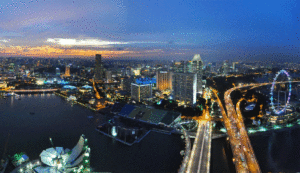Over 40 years ago, on the 30th of March 1981, the President of the United States Ronald Reagan was shot and wounded by John Hinckley Jr. in Washington, D.C. He was returning to his limousine after a speaking engagement at the Washington Hilton Hotel. Reagan was seriously wounded by a pistol bullet that ricocheted off the side of the presidential limousine and hit him in the left underarm, breaking a rib, puncturing a lung, and causing serious internal bleeding. Upon hearing the first shot the Special Agent in Charge Jerry Parr almost instantly grabbed Reagan by the shoulders and dived with him toward the open rear door of the limousine. Furthermore, Secret Service agent Tim McCarthy put himself in the line of fire, he spread his arms and legs, taking a wide stance directly in front of Reagan and Parr to make himself a target and thus protected the President from being shot directly. The actions of these two men more than likely saved the President’s life. Although the President was close to death upon arrival at George Washington University Hospital, they were able to stabilize him in the emergency room. It was a frightening time for the Nation as he then underwent emergency exploratory surgery. Three other men who worked for him were wounded but thankfully survived, White House press secretary James Brady, Secret Service agent Tim McCarthy, and D.C. police officer Thomas Delahanty. Although Brady had brain damage which left him permanently disabled, when he died in 2014 it was considered a homicide because it was ultimately caused by his injury. Reagan’s recovery speed impressed his doctors, but they advised the President not to work in the Oval Office for a week and avoid travel for several weeks. Each day he did a few hours of work, building up his strength, but it took over three weeks before he led a Cabinet meeting and 6 months before his doctors thought he had recovered completely. In his autobiography An American Life, Reagan recalled when he visited the theatre where President Lincoln was shot dead, he said, ‘I looked up at the presidential box above the stage where Abe Lincoln had been sitting the night he was shot and felt a curious sensation … I thought that even with all the Secret Service protection we now had, it was probably still possible for someone who had enough determination to get close enough to the president to shoot him’. Little did he realise how right he was. After the incident the President maintained a confident attitude towards the attempt on his life. He is recorded as having said the next day that he knew that his physical healing was directly dependent on his ability to forgive Hinckley. He firmly believed that forgiveness was the key to everything including physical health and healing. In displaying this attitude, he was illustrating the same Christlike thinking as Jesus Christ displayed on the cross. He said in the gospel of Luke chapter 23 verse 34, as the people around him laughed and scorned him, Jesus said, ‘Father, forgive them; for they know not what they do.’ The Roman soldiers who had crucified him did not realise the evil they had perpetrated and even more deplorable were those who had lied at his trial and allowed an innocent man to die. Yet as Jesus looked on that vast crowd, he had compassion on them. Just like the Secret Service agent who risked his life to protect the President. Christ gave his life to save those who would believe in him. Not only that, but he also forgives them. Forgiveness is that unselfish love which keeps no record of the wrongs. That is what Christ does for those who trust in him. He saves them and forgives them their sins, what a wonderful contentment to know forgiveness of sins.
P. Pilgrim pilgrimway101@yahoo.com




